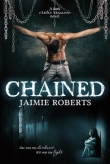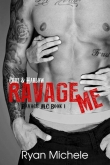
Текст книги "Bones Never Lie"
Автор книги: Kathy Reichs
сообщить о нарушении
Текущая страница: 20 (всего у книги 21 страниц)
CHAPTER 43
THE EARTH HAD twirled on its axis fourteen times. Charlotte was enjoying one of those midwinter flukes that make you thankful you live in the South. The sky was an endless blue-gold dome, the temperature somewhere in the low seventies.
Mary Louise chose mango, topped it with strawberry and pineapple chunks, walnuts, raisins, and a thousand gummy things. It was a truly impressive amount of poundage.
We took our frozen yogurt to a small iron table outside the Phillips Place Pinkberry and watched post-holiday shoppers there to score bargains or off-load unwanted gifts. We made a game of guessing what item each might be returning. The kid’s ideas were much more inventive than mine.
In the previous two weeks, CSS had spent days tossing the apartment on Dotger. The contents of the freezer were as I suspected. Blood. Scalp. Swabbed saliva. DNA testing showed everything came from Anique Pomerleau.
Chloral hydrate capsules were found in an unmarked vial in a bathroom cabinet. A syringe. A dish and pestle for mixing the powder with water.
Drawstring plastic bags were recovered from a kitchen drawer. Content analysis demonstrated that those remaining in the box were from the same manufacturer and batch as the one McGee had taken to Sharon Hall to asphyxiate Mary Louise.
A purple wool coat was collected from a hook in the bedroom closet. Fiber analysis linked it to the threads snagged on Ajax’s backyard hedge.
In addition to Lizzie Nance’s other ballet slipper, the box on McGee’s desk contained news clippings covering the murders of Gower, Nance, and Estrada, and the disappearance of Donovan. And more pictures of me.
Mary Louise seemed unscathed, more than willing to talk about her ordeal. On her way home from school, she’d stopped by the annex to give me a picture of Birdie she painted in art class. Getting no response to her ringing and knocking, she’d decided to read her book on the patio and wait a short while.
She’d barely settled when a woman appeared, claiming to be my friend. The woman said I’d been taken ill and that I’d asked her to contact Mary Louise about minding Birdie, whom she had in her car. Trusting the woman, who was wearing scrubs and therefore a nurse, Mary Louise went to gather the cat.
Mary Louise remembered sharing apple slices as she and the woman walked to her vehicle; after that, “only swimmy bits from the romp on the lawn.” Her words.
Ironically, at the time Mary Louise was being abducted, I’d been two blocks away, at the Marcus home.
Remains of an apple were found in Tawny McGee’s Impala. Tox analysis showed portions contained chloral hydrate. The injected slices had been notched at one end.
An old MacBook Pro was dug out from under the car’s front seat. Pastori and his IT pals were dissecting it every which way but Sunday.
McGee was charged with two counts of first-degree murder, kidnapping, and a dozen other offenses with regard to Leal and Nance, kidnapping and assault with regard to Mary Louise. Vermont was waiting in the wings with Gower. Deciding what to do about Pomerleau. Quebec was in line with Violette and Bastien. The upside to homicide: no statute of limitations.
McGee was interrogated daily, mostly by Barrow and Rodas. Slidell was on administrative leave, routine in any officer-involved shooting. He watched via remote hookup, smoldering, jotting notes so fiercely that his pencil lead often snapped and went flying.
Tinker—who had been discharged from Mercy and was recovering nicely—and Slidell gave differing accounts of the incident. Both versions and witness statements agreed on core facts.
Tinker had been at the home of Verlene Wryznyk, Slidell’s former girlfriend and Tinker’s flavor of the month. Tinker wanted to tango, Verlene didn’t. She asked him to leave, he wouldn’t. Frustrated, Verlene called someone she trusted.
Slidell stormed in breathing fire. Hoping to neutralize Skinny long enough to allow him to cool down, Tinker drew his weapon. The two struggled and the gun discharged. Tinker caught a bullet in the shoulder.
Slidell visited me at the MCME a week after McGee’s arrest. God knows why, but he felt compelled to share the true story. After demanding stick-a-needle-in-my-eye confidentiality, he told me that Tinker had shown up drunk and become aggressive, and Verlene had capped him.
I told Slidell he was a sap for taking the hit. Got “Eeyuh” for an answer. Clearly, Skinny was not over Verlene.
McGee waived her right to counsel, even when she was assured that efforts would be made to secure a female attorney. Barrow and Rodas nearly wet themselves with joy.
Along with Slidell, I observed most of the questioning. Throughout, McGee was cool and distant. But her eyes were empty as glass, never connecting with anything or anyone in the room.
McGee admitted to stealing Kim Hamilton’s identity. Talked freely of the girl with whom she’d been imprisoned. With whom she’d whispered, naked in the dark.
In 1998, Alice Kimberly Hamilton and four older teens made a clandestine trip from their hometown of Detroit to Toronto for a night of Canadian fun. At that time no passport was required to transit the border, so she carried a birth certificate in one shoe.
The secret trip turned deadly when Hamilton’s path crossed that of Pomerleau or Catts/Menard. McGee didn’t know why either would have traveled to Ontario. I suspected we never would.
Hoping to keep the sole link to her life out of the hands of her captors, Hamilton hid the birth certificate behind a cell wall, in a gap between the wood and cement. McGee listened to Hamilton’s hushed secret, stored the information for possible future advantage.
Hamilton lasted only nineteen months in captivity. McGee had no idea what happened to her body. She was sixteen years old at the time of her death.
Once freed and in therapy, McGee pressed for a visit to the house on de Sébastopol. When Lindahl finally agreed, she went to the basement and dug out Hamilton’s carefully concealed ID.
The document proved useful sooner than McGee could have anticipated. After storming from the Kezerian home in the summer of 2006, she spent a week on the streets and eventually hooked up with a group of girls from the University of Vermont. Drunk or stoned, they offered her a ride south. Passports were still unnecessary for vehicular crossings, so McGee entered the States using Hamilton’s birth certificate.
For several months she crashed at one student pad or another in Burlington. Using the money she’d stolen from Bernadette, and the name Alice Hamilton, she enrolled in a quick-trip online course and obtained certification as a CNA1.
McGee had learned of the Corneau farm by overhearing conversations between Pomerleau and Catts/Menard. More info stored for future advantage. In early 2007, using what remained of Bernadette’s stash, and perhaps more obtained by the same means, she bought the aged Impala and set out for St. Johnsbury. One can only imagine that first meeting between former predator and prey.
By McGee’s account, she and Pomerleau lived together for a while, making maple syrup and playing in the snow. All sins forgiven. One night Pomerleau died in her sleep. Saddened, McGee left Vermont for North Carolina to fulfill a long-standing desire to thank me properly. Thus the clipped photos.
Not sure if she’d flourish in Dixie, and wanting backup options, McGee kept paying the bills on the Corneau property. Pomerleau had explained the scam, the accounts at the Citizens Bank in Burlington. Or, more likely, McGee had extorted the information and stored it for future advantage.
I suspected a far different reality for the time in Vermont. McGee pursuing much darker desires. For payback. For torture. Eventually, for blood. One day we may learn how she overcame her former captor, how she harvested Pomerleau’s tissues, how she killed her. Or we may not. That will be up to McGee.
When questioned about Gower, Nance, Leal, and the other girls, McGee switched to abstractions. Talked of angels, of sunlight, of eternal peace and safety. Only then did something remotely human soften her eyes.
When asked why Pomerleau was in a barrel, McGee stared blankly.
When asked about human tissue in her freezer, she stared blankly.
When asked about chloral hydrate, she stared blankly.
When asked about Hamet Ajax, she stared blankly.
Incredibly shrewd or crazy as a loon. I couldn’t decide.
“Ready?”
Mary Louise’s voice snapped me back to the present. I was wrong about her intake capacity. The kid had cleaned her tub.
“Yes, ma’am,” I said, bunching my napkin.
While driving, we discussed the latest project. Mary Louise was creating hats to honor each of the murdered or missing girls. A knitted stocking cap for Nellie Gower. A chignon-wrapping thing for Lizzie Nance. A seashell affair for Shelly Leal. A cloche with a fleur-de-lis on the band for Violette, an Acadian flag for Bastien. The other designs were still on the board.
Mary Louise knew, of course. The story had dominated the news for over a week. Leal. Nance. Estrada. The CMPD was basking in the warmth of citizen approval. But there was one alteration to the cast of characters. The press conferences hadn’t featured Tinker on the dais.
In the glow of generalized goodwill, Henrietta Hull had escaped all censure for acting outside her jurisdiction. Even in her hurry, she’d been smart enough to notify her dispatcher that she needed to go to Mecklenburg on one of her cases to question a potential witness possibly planning to leave the area. She’d also notified the CMPD that she needed to see a person of interest in Charlotte on an out-of-county matter, but would not require local assistance. That seemed to satisfy everybody, and it cut her in for a portion of the credit for subsequent events.
I was asked for interviews. Did them at Salter’s request. Journalists wanted to probe my emotions. “How do you feel about these murdered children? How do you feel about catching their killer?” I felt like smacking the mikes into their carefully practiced frowns.
And then the fickle media moved on.
Ryan phoned twice immediately after McGee’s arrest, his voice thick with remorse. My comment about the journal found at de Sébastopol and the possibility of another victim had made him start looking into Kim Hamilton. He’d been working nonstop, pairing hints dropped by Lindahl and the Kezerians with data dug from Canadian border control files, and researching participation in online nursing courses tracing to Vermont. One more day and he’d have zeroed in on McGee. It was why he’d stayed in Montreal.
I told Ryan that he’d done the right thing. That it was the way we worked. Our MO. He said he should have been there for me. Yeah. For me. I tried to believe it, but deep down, I suspected his true regret was at not being part of the final climax scene. And then he stopped calling.
I drove Mary Louise to her door. We hugged, then I watched her all the way into the house. Two weeks, and still the guilt turned me inside out. Perhaps always would.
The next day, I showered, blow-dried my hair, and donned fresh jeans and a white Ella Moss blouse. Hip but not overdone.
I was looking forward to the rendezvous. And dreading it. I hadn’t exactly been rescued. But I’d been assisted in a situation I might have bungled alone. I felt grateful. And embarrassed by the need to feel grateful.
At ten past seven, I turned in to the lot outside Good Food on Montford. My suggestion. The place would be loud enough to shield our words, quiet enough to allow conversation across a table.
Hull was there, seated at a two-top off to one side. Dressed as I was, with careful nonchalance.
On seeing me, Hull waved, palm pink against the deeply pigmented skin covering the rest of her ample form. I wove my way to her.
“How’s it going, Merlin?” Her smile was warm and toothy.
Synapse. A flash of white in the darkness. A grunt. Simultaneous hits that blasted air from McGee’s lungs and laid her flat.
“Can’t complain. And you, Mean Joe?”
“Smooth and in the groove.”
Mary Louise had gone off in an ambulance. Tawny McGee had gone to jail. Sitting in the darkness, waiting to tell our story, Hull and I had eased the tension by tagging each other with NFL nicknames. Olsen and Greene, two legendary tackles.
I slid into the vacant chair. Seconds later, a waiter appeared. Sean.
I asked for Perrier. Hull wanted a Bud. While Sean got the drinks, we considered the menu. Which took some time, since the place had a tapas format.
“How’s Slidell?” Hull asked when we’d ordered—I’d ordered. Hull had just tossed the menu and rolled her eyes. Which were large and the color of Hershey’s syrup.
“Skinny’s like the heroine in a bad horror movie,” I said.
“Still breathing at the credits.”
“Always.”
“And Tinker?”
“No idea.”
Once all the little dishes arrived, we served ourselves, then turned to developments since last we talked.
“The DNA from the lip print was a match to McGee?” Hull poked at a mussel.
I nodded. “The results came back yesterday. Her face must have brushed Leal’s jacket as she was transporting the body.”
“No one knows diddly about the hair found in Estrada’s throat.”
“It’s gone?”
“Like the wind.”
“Not surprising, given the ineptness of the autopsy report.” I helped myself to a meatball. “Plowing through all the surveillance video paid off. Twice they’ve got what was probably McGee’s Impala heading in the direction of I-485.”
“The night Leal was left under the overpass.”
I nodded again. “They’re hoping enhancement will allow them to read the plate.”
Hull smiled wryly. “The two-digit match to Ajax was just coincidence.”
“And the child seen on Morningside wasn’t Leal. Talk about the world’s unluckiest sex offender.”
“How about the laptop?” Hull eyed the beef carpaccio, opted for another fried oyster.
“Pure gold. It appears McGee found Nance through chat rooms that answer questions about nursing as a career.”
“She’d already moved from Vermont to Charlotte?”
“Looks that way. Five years later, she spotted Leal in the ER. Used the opportunity to tip the kid to the dysmenorrhea forum. Communicated with her there.”
We went silent, thinking about the vulnerability of children amid the pitiless anonymity of the Internet.
“Any evidence of contact with Colleen Donovan?” she asked.
“Nothing so far. Donovan was living on the street and may not have had access to a computer.”
“She’s still in the wind?”
“Yeah.”
A few beats passed as we ate.
“So McGee laced Ajax’s coffee, then set him up in his car,” Hull said. “Why?”
“Slidell’s phone calls and visits to the ER and to her apartment must have triggered some sort of paranoid spiral. Knowing the cops suspected Ajax, McGee killed him and planted evidence in his trunk to close the deal.”
“Why do you suppose Ajax let her in?”
“Undoubtedly, she’d concocted some plausible story about the ER and when he’d be able to return. McGee may be deeply disturbed, but she’s cunning.”
“And clever at hiding the fact that she’s psycho.”
Not exactly PC, but true.
“McGee used chloral hydrate to subdue her vics. How come the stuff only showed up in Ajax?”
“Mary Louise Marcus had chloral hydrate in her system. The toxicologist found it because he knew to look. Standard drug screens typically test for alcohol, narcotics, sedatives, marijuana, cocaine, amphetamines, and aspirin.”
“But we’re talking dead kids. No one went beyond standard testing?”
“The girls’ bodies weren’t found right away. For Gower it was eight days, for Nance fourteen, for Estrada four. Even if you’re looking for chloral hydrate, which no one was, decomposition can mask its presence.”
Hull’s brows dipped in confusion.
“On a gas chromatograph, decomp chemicals will peak higher than chloral hydrate. Even if further testing had been done, it might have been missed.”
“You think McGee killed Gower by herself? Or after she hooked up with Pomerleau?”
“Murder was never Pomerleau’s style.”
Hull dipped her chin and tipped her head. Seriously?
“You know what I mean. Of course it was murder. But in Pomerleau’s case, the killing was a by-product of cruelty and deprivation. Not a primary objective.”
“Right.”
“Anyway, unless McGee tells us, we may never know where she was living when Gower went down. Or if she acted alone.”
“Or if Gower was her first.”
I’d had the same grim thought.
“Why’d McGee break the pattern of dates and grab Marcus?”
“Same answer. Slidell’s probing sent her spiraling out of control.”
Hull’s chewing slowed as she rolled that around. Then, “I get the dates. She’s killing on the anniversaries of abductions or deaths in Montreal. Kids she knew. Maybe kids she saw die. But why the hair, the tissues soaked with saliva? Why plant Pomerleau’s DNA on her victims?”
I’d posed that question to Pamela Lindahl during the many hours we’d spent on the phone. Though difficult to assess long-distance, the psychiatrist’s tone had suggested agonizing guilt.
I took a moment to organize my thoughts. And have a bite of sweet-corn risotto.
“McGee’s therapist is convinced the arousal didn’t come from degrading or controlling, as with many serial killers. She feels McGee’s psychosis is two-pronged. First, she’s reenacting the deaths of the original victims, but killing them quickly and leaving them ‘in the sun’ to assure that her victims will never suffer as she did.”
“That’s why the bodies were placed out in the open, arranged with care and free of trauma or disfigurement.”
“Exactly. Second, McGee was seeking revenge on Pomerleau. But at the same time, she was diverting attention from herself, should she ever fall under suspicion.”
“So the shrink says she was driven by both love and hate.” Dubious. “And an instinct for self-preservation.”
“Yes.”
“Targets were chosen because they resembled one of Pomerleau’s Montreal victims?”
“Probably McGee herself. She was abducted at age twelve.”
“McGee made the calls six months out? Checking to see if the cops had anything on Donovan or Estrada?”
“Probably,” I said.
Hull bunched and tossed her napkin. Leaned back. Crossed her arms and wagged her head slowly. “Don’t sound like enough crazy to me.”
I pictured a girl in a trench coat and crooked beret. Felt sorrow clot any response I might have offered.
I knew the drill. So did Hull. McGee’s mental competence would be determined by pretrial motions and hearings and judges and lawyers.
Sane. Insane. Either finding would result in Tawny McGee’s worst nightmare, one she’d already endured. A life in one type of prison or another.
It had to be.
Even the damaged cannot be allowed to damage.
CHAPTER 44
THE NEXT MORNING I drove to Heatherhill Farm. Like the magnolia at Sharon Hall, the azaleas and rhododendron winked both waxy green and dull brown. I imagined the upside-down leaves, startled by the warm spell, turning for instruction from their roots.
River House itself was half in shade and half in bright sun. Its windows also looked confused, undecided between reflecting and ingesting light.
Mama was on the back deck, bundled in a parka and scarf, stretched out on the same chaise she’d occupied Thanksgiving week. As I had then, I paused a moment to study her. Perhaps to fix her image forever in my memory.
She’d lost weight, though the bulky jacket made that appraisal difficult. Her hands were chapped, the treasured hair a bit dull. Still, my mother looked beautiful.
It was a pleasant visit. No rancor. No resentment. I didn’t bring up chemo. She didn’t correct my manners or dress.
I told Mama about the arrest of Tawny McGee. About the CAIS. About the psychopathology of hatred and love. She called it Pomerleau’s legacy of madness.
I thanked Mama for her input. Said the YouTube cycling video had been the big break in the case. Ryan’s big bang.
She asked if I’d seen Ryan. I said not for a while. She didn’t persist.
Then I told her the good news. The police had located Kim Hamilton’s brother, now living in Miami. He was saddened to learn of his sister’s death and troubled by not knowing the location of her remains. Mostly, he was comforted by confirmation of a truth he’d always felt in his soul. Kim hadn’t turned her back on her family by running away.
At noon Mama and I shared a lunch of avocado salad and grilled chicken breast. At one Goose trundled Mama off for her nap.
That evening I turned in early. As was common since I’d met Umpie Rodas two months earlier, memories bombarded me the instant I closed my eyes. Unbidden apparitions involving bones and corpses and children.
I had no say in the order or arrival times of these sad visitations. Only in their duration. As soon as a reel began to play, I’d shut it down.
For some reason, that night I let my mind roll.
I saw Nellie Gower pedaling her bike, brown hair flying and catching the sun. Tawny McGee tightening the drawstring of a plastic bag under her chin.
Lizzie Nance practicing pliés and arabesques at a ballet bar. McGee closing her lifeless little fingers around a bunched white tissue.
Tia Estrada walking hand in hand with her mother. McGee tucking long blond hairs deep into her throat.
Shelly Leal tapping a keyboard, face radiant in the glow of the screen. McGee arranging her still body on a highway embankment.
I imagined the girls at the moment their worlds halted forever. Did they know death was at hand? Did they ask why?
In addition to the ballet slipper and clippings, McGee’s souvenir box had contained a yellow ribbon identical to the one found in Hamet Ajax’s trunk. Avery Koseluk’s mother didn’t recognize the ribbons. Laura Lonergan said they had not belonged to Colleen Donovan. Neither had yielded DNA.
I pictured those ribbons, wondered if they’d once bound the hair of my Jane Doe skeleton. Of another little girl as yet unknown to us. Though we might never learn for certain if there had been other victims, Barrow and Rodas would investigate on the U.S. end, Ryan in Canada.
I saw my Jane Doe, a sad collection of bones labeled ME107-10. Wondered if somewhere a family was searching.
I saw Colleen Donovan. Avery Koseluk. Hoped one day each would enter a police station seeking help.
We’d never know who removed Donovan’s name from the list of MPs on the NamUS site. It was back there now. With Koseluk and the scores of others either missing or lying anonymously in morgues or police evidence rooms.
Anique Pomerleau. Tawny McGee. Victims. Monsters. Their childhoods stolen. Their adult games played out with cold-blooded cunning.
It was finished now.
Yet it wasn’t.
The next morning I ran two miles. A quick shower, a bout of paper shuffling. Then I began grading lab exercises for the spring-semester course I was teaching at UNCC.
Earlier in the week, my front doorbell had begun sounding like a seagull with adenoid issues. I’d gotten halfway through the stack when a wobbly squawk interrupted.
Curious, I hurried to the door and peered through the peephole.
A spectacularly blue eye peered back.
Startled, I jumped.
Great.
Conscious of my wet hair and baggy yoga pants, I opened the door.
Ryan was wearing jeans, a leather jacket, and a black wool muffler. His cheeks were blotchy red. Probably due to overheating.
For a moment no one spoke. Then we both tried at once.
“This is a surprise,” I said.
“I should have phoned,” he said.
“You go first,” I said.
“Marry me,” he said.
“I– What?” That couldn’t be right.
“I’m proposing.”
“Proposing.”
“Marriage.”
“Yes.”
“It’s my first time.”
“Yes.”
“I’d envisioned a much more romantic pitch.”
“Your delivery was clear.”
“Shall I practice and try again later?”
“You were fine.”
“Or we could do dinner.”
“I often eat dinner.”
Ryan pulled me close. I put my arms around him and pressed my cheek to his chest. A beat, then I stepped back.
We looked at each other.
“Eight o’clock?” he asked.
“Eight is good,” I said.
Then Ryan was gone.
Zombie-like, I went inside. Closed and leaned on the door.
I couldn’t say how long I stood taking in the familiar. The known.
Harry’s chenille throw on the sofa back. Gran’s sweetgrass basket on the rug by the armchair. Mama’s silver candlesticks on the mantel.
My gaze fell on an item confiscated at the apartment on Dotger. A child’s painting—the one Mary Louise had made of Birdie that she’d wanted to show me.
In my mind, I saw ice-blue eyes. Heard again and again the offer of an altered future.
I thought of endless uncertain possibilities. Of impediments I could neither foresee nor control.
I felt a smile nudge my lips.
Maybe.
Just maybe.
But today I would frame the painting of the white cat playing with the red plaid mouse.








